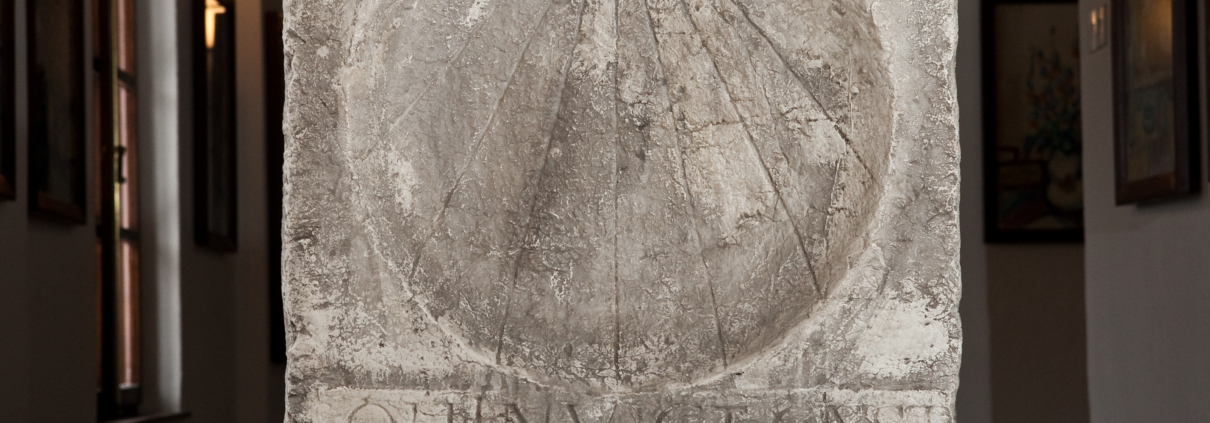SUNČANI SAT
Najstariji sačuvani mjerači vremena na području Hrvatske su sunčani satovi isklesani od kamena u obliku polukugle. Sunčani sat iz III. st., posvećen Jupiteru i Solu, s lokaliteta Metulum kraj Josipdola, koji je niz godina stajao pred crkvom u Josipdolu, danas se čuva u Arheološkome muzeju u Zagrebu, dok je ova gipsana replika dio Arheološke zbirke Zavičajnog muzeja Ogulin.
Na gotovo okrugloj šupljini sata urezano je devet linija. Središnja linija je podnevna a četiri linije sa svake njene strane označavale su po četiri sata prije i poslije podne. Sunčani sat se stoga koristio za sunčanog vremena, od 8.00 sati prijepodne do 16.00 sati poslije podne.
Da bi sat mogao funkcionirati, mora biti postavljen vani, okrenut prema jugu, na mjestu gdje je obasjan Suncem cijeli dan.
Kako se Sunce prividno kreće preko nebeskog svoda, tako sjena štapa putuje površinom sa satnom mrežom. Kad je Sunce najviše na nebu, sjena štapa pada vertikalno, pa ta linija označava podne. Sunčani sat je najtočniji sat na svijetu, on uvijek pokazuje točno vrijeme, dok su naši mehanički, električni, elektronski i drugi satovi točni samo u dva trenutka svake godine ( proljetna i jesenska ravnodnevica ) a cijeli ostatak godine lažu!
Sol Invictus (“Nepobjedivo Sunce”) je bio bog sunca državne religije Rimskog Carstva čiji je kult uspostavio car Aurelijan 274. godine i koji je zbog svoje važnosti nastavio zasjenjivati ostale istočne kultove. Nazivom “Sol Invictus” su se nazivali i brojni drugi bogovi sunca prije i za vrijeme ovog razdoblja. Naziv “Sol Invictus” se pojavljuje i na kovanicama Rimskog Carstva.
Natpis: I(OVI) O(PTIMO) M(AXIMO,/ SOLI INVIETO CONSER(VATORI)/AVGU(STI) N(OSTRI)
Jupiteru najboljem najvećem nepobjedivom suncu čuvara cara našeg



